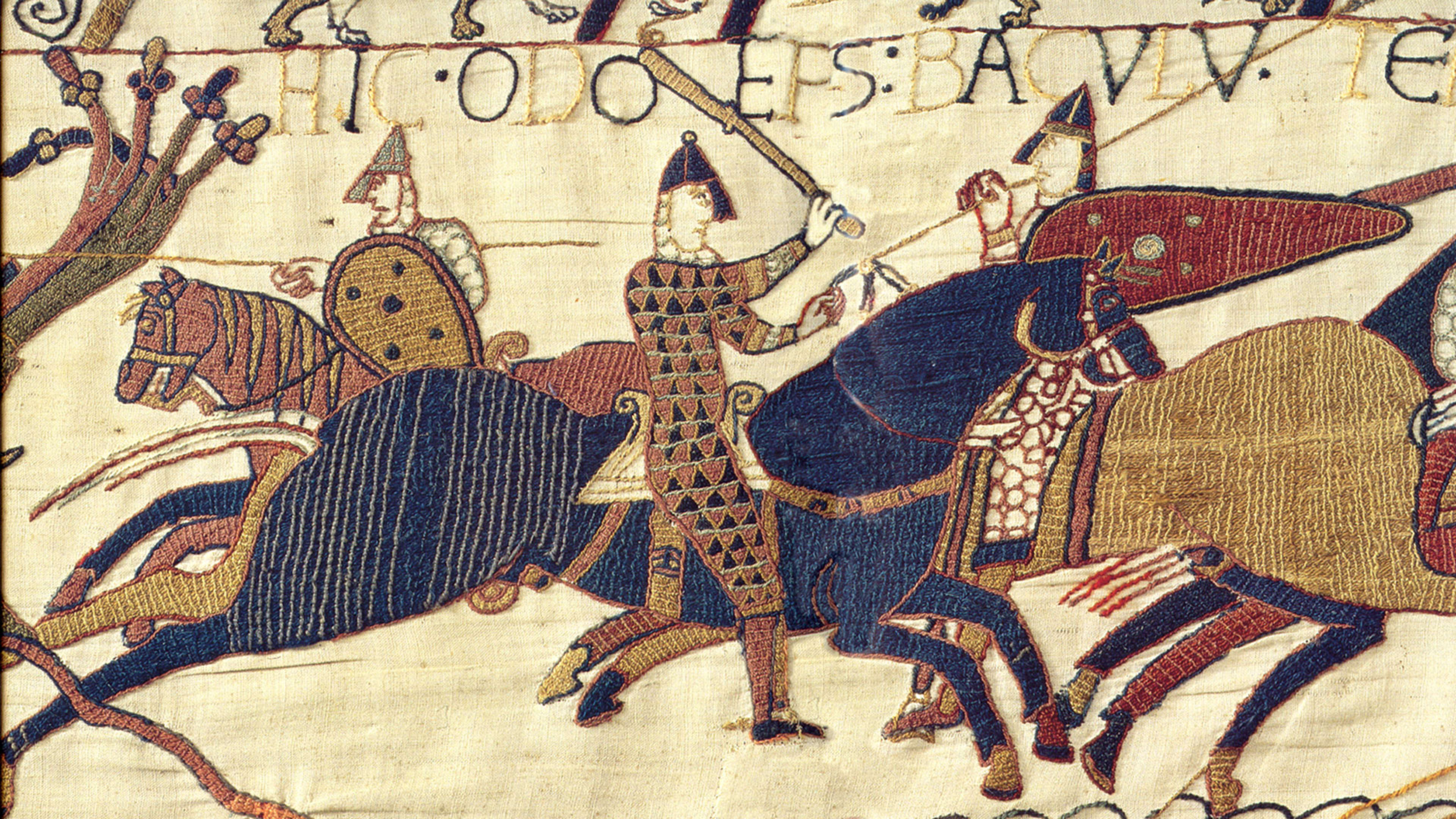The Bayeux Tapestry is going on display in the United Kingdom for the first time ever. France has agreed to lend its neighbor the nearly thousand-year-old fabric, once it’s determined that the tapestry can make the trip across the channel.
If you have no idea why that’s cool or why you should care about a tapestry that is technically an embroidery, here are five things to know about the Bayeux Tapestry to share over your cubicle wall:
- The tapestry tells the story of William I’s conquest of England, which is how he earned the name William the Conqueror. The 230-foot tapestry includes depictions of the Battle of Hastings and the defeat of the Anglo-Saxon King Harold in 1066 in a long-running format often described as the “first strip cartoon,” according to The Guardian.
- The work was “probably commissioned” in the 1070s by the half-brother of William the Conqueror, the Bishop Odo of Bayeux, and some think it was created by teams of nuns in England, not in France. Its most famous scenes include Harold getting an arrow in the eye at the Battle of Hastings, and a seeming depiction of Halley’s comet.
- England has tried to borrow the tapestry twice over the last 900 years, but loans have never worked out. Instead, it’s had to make do with a replica housed at the Reading Museum, made by a local embroiderer who decided that “England should have a copy of its own.”
- The earliest written reference to the tapestry was in an inventory from Bayeux Cathedral in 1476, near where the tapestry is currently displayed.
- The tapestry was confiscated for military use, for covering weapons, during the French Revolution, before a lawyer saved it, per the BBC. Napoleon put the tapestry on display in Paris in 1804, while he was planning an invasion of England. It was stolen by the Gestapo in 1944, then recovered in Paris and displayed in the Louvre in 1945.
Recognize your brand’s excellence by applying to this year’s Brands That Matter Awards before the early-rate deadline, May 3.
